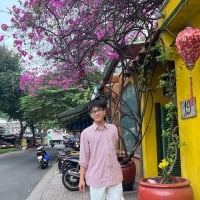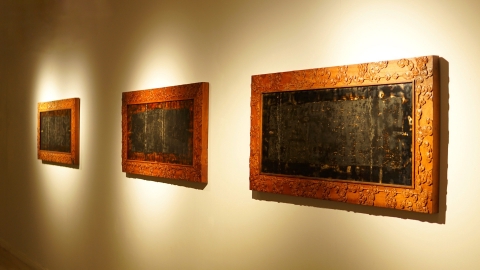Born and raised in Hue, stories about the royal family, a period of history, have long been a part of Bao Hanh. Perhaps that is why the girls in royal costumes still exude a very familiar nostalgic feeling. With a gentle, somewhat "poetic" color tone, along with a focus on depicting every detail, the "Thi" in the exhibition appear with elegant, dignified beauty, with a calm, gentle demeanor.
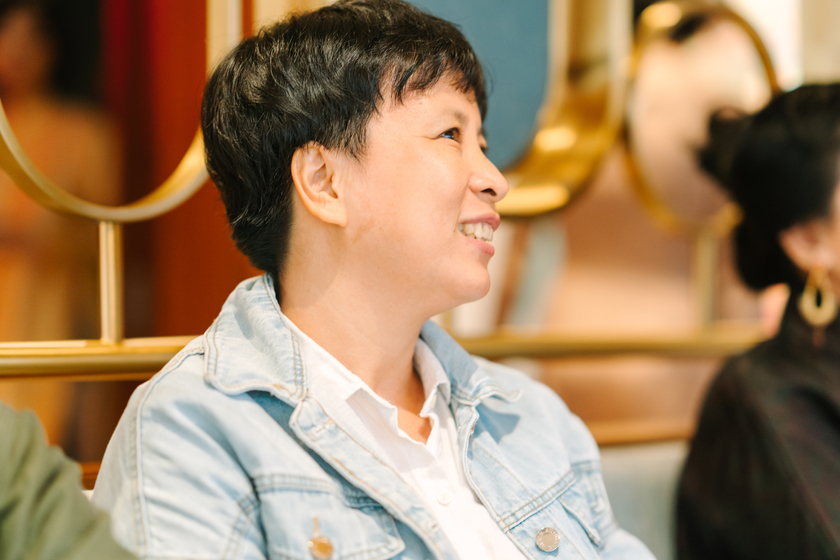
Female artist Phan Linh Bao Hanh on the opening day of the exhibition "Thi" (Her).
A DIRECT LOOK INTO THE INNER WORLD OF THE "SHIPS"
It is said that in the feudal society of Vietnam, when given names were usually reserved for men, the word “thi” would be called after the woman’s family name to identify which family she belonged to. When she reached the age of marriage and started a family, her name would be made up of her father’s and husband’s family names, combined with the word “thi” (like Ly Tran Thi, meaning the girl originally belonged to the Ly family, now became the daughter-in-law of the Tran family).
Just like that, “madam calling herself Thi” became a habit in the naming of many generations. Nowadays, when the word “Thi” is no longer a popular pronoun in modern society, that way of calling seems to have become a reminder of a bygone era, of what belongs to the traditional category of the Vietnamese people.
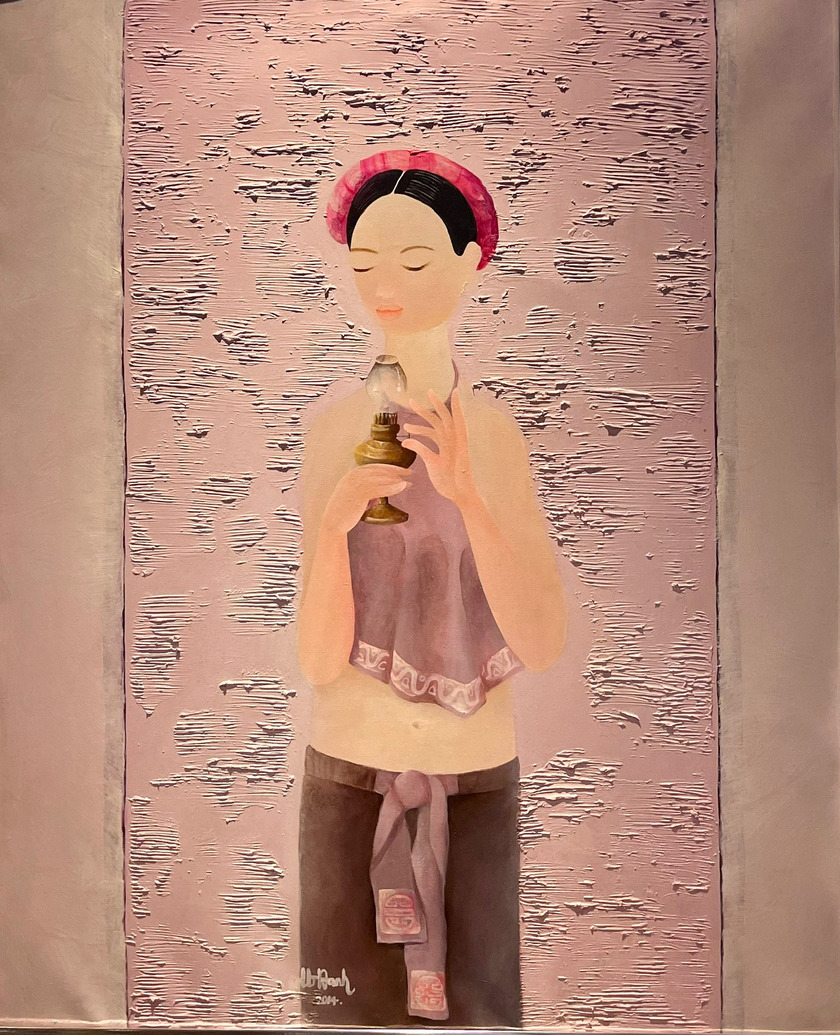
The work "Summer Night" (2014).
It can be said that Hanh has always been faithful to the Primitivism school of art in her paintings of women. With this style of creating images, the artist mainly focuses on depicting the contrast between the static state of the character's body movements and the lively, sparkling eyes - like a window to look into the inner soul that is constantly moving inside them. The female artist focuses on describing the 'windows of the soul', through which the thoughts, inner self, and temperament of women are expressed.
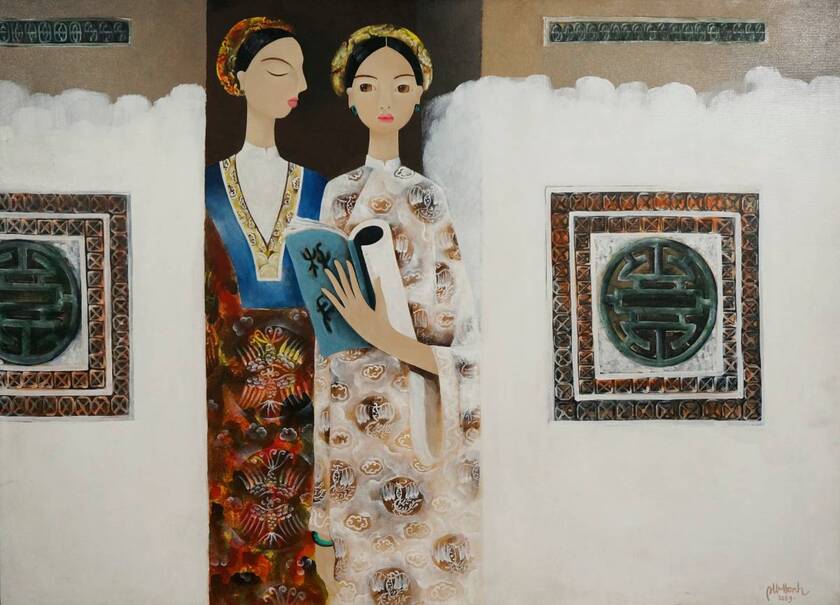
The work "Talking" (2009).
It is a gentle look that hides a feeling, a determined look, a loving look mixed with a bit of steel, a pair of eyes that exudes utmost pride, or a clarity and eagerness before new things. The nuances of the eyes seem to speak silently to communicate with the viewer, so that somehow, they can find sympathy with the feelings of the characters in Hanh's paintings, girls with somewhat complicated inner lives.
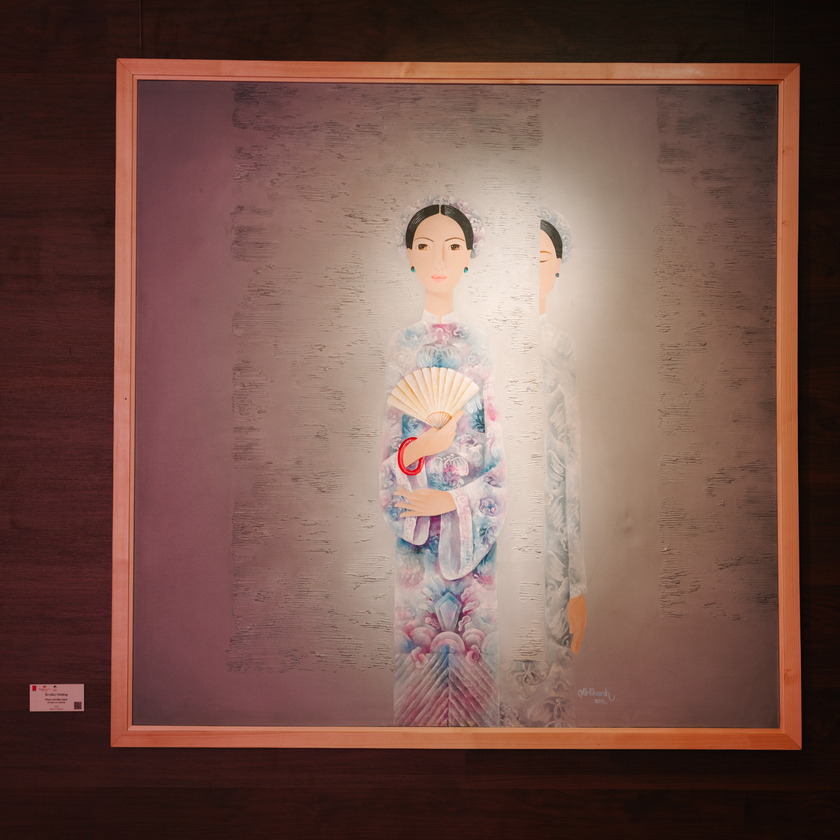
The woman with a direct gaze and a gentle, calm demeanor in the work "Hidden" (2012).
In contrast to the lively eyes is the unusual calmness in the demeanor of the "Thi". From the posture, the way of holding hands all exude the gentleness and dignity of women. Although using harmonious colors, the contrast still appears clearly in the eyes and thoughtful demeanor of the characters. At first glance, the audience can easily see the gentleness and charm of the girls. But behind the gentleness is the integrity and determination when overcoming many storms to find peace for themselves.

The eyes of the girls in Hanh's paintings are all direct and undisguised.
HUE AO DAI IS IN HARMONY WITH THE PROUD BEAUTY OF WOMEN
Hue culture is subtly portrayed through the meticulous lines and attention to detail in the artworks of artist Bao Hanh. Although not focused on identifying the paintings, viewers can recognize the "very Hue" features in the works in this exhibition.
This is firstly shown through the similar costume trends in the paintings in the exhibition. The "Thi" are all dressed in traditional Hue royal ao dai by the female artist. Despite the many years, the ancient capital's ao dai still retains its modesty and gentleness, exuding the spirit of Hue women in their walking, etiquette, speaking and behaving. Hue girls are taught carefully, strictly, even harshly about the words "cong - dung - ngon - hanh".

The female artist focuses on every detail in the ao dai.
When looking closely at the ao dai of the Hue people at that time, you will see that it is an elaborate work of art by tailors. Each stitch is meticulously sewn and embroidered, the arrangement of the buttons also shows the talent of the ao dai "artisan". The value of each ao dai is expressed in the harmonious combination of colors and philosophy of life on the ao dai.
If tailors use needles and threads to create uniqueness in each dress, artists use lines and colors to recreate this beauty through paintings. Typical among the dresses in this exhibition is the five-panel dress. The dress associated with the common life of the people of Hue is vividly and impressively depicted on the bodies of the "Thi" through the hands of female artist Phan Le Bao Hanh.
The appearance of the "Thi" is carefully crafted through the accessories that go with the costumes. If you pay attention, you will see the bright pearls appearing in most of the paintings. From the hairpins with pearls, pearl earrings, pearl bracelets, or a pearl placed on the woman's hand. Pearls are a symbol of nobility and luxury. The girls are not only elegant in Hue royal costumes, but also luxurious in impressive pearl jewelry and accessories.

The "rain effect" is a way to "return" purity, washing away the trivial impurities of a prejudiced society on women.
Although they were dignified, noble and proud, women, despite living under strict discipline in the past, still had to live under social prejudice. Women, whether in the past or present, still had to suffer certain influences from unwanted impurities. When the raindrops fell, they washed away all the prejudices and slander of the world, returning purity, integrity and gentleness to women.
The music with the lyrics by the young female singer Tinee sounded like the end of the exhibition:
"In the past, I said one thing and did not dare say two.
I dare not be wrong about social prejudice
Love is not your turn to be damned
Three obediences and four virtues are carried on the shoulders..."
Some pictures in the exhibition "Thi" (Her):

The exhibition is on display until May 7 at Fusion Original Saigon Hotel.

Still life paintings were also selected by Lotus Gallery to bring to this exhibition.
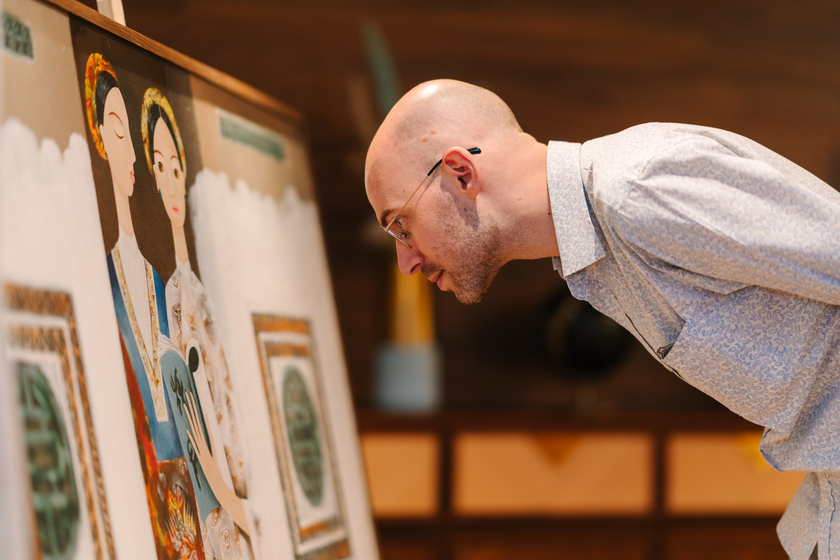
The audience paid attention to the detailed lines in Hanh's paintings.
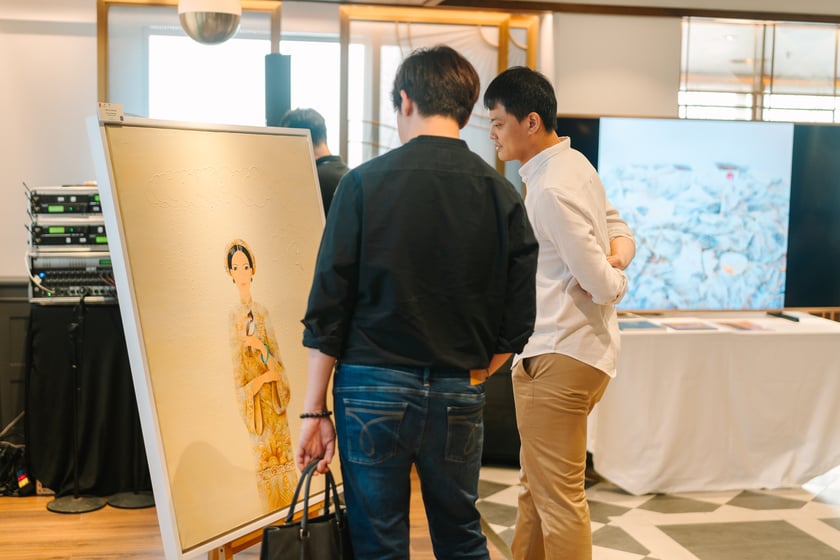
The impressive painting attracted a lot of attention from the audience.

Artist Phan Linh Bao Hanh took a photo with representatives of Lotus Gallery and Fusion Original Saigon at the exhibition opening ceremony.
Practicing fine arts since 2007, female artist Bao Hanh has created works with a variety of themes. From landscapes, still lifes, animals and people, from Kinh girls to Cham, Khmer, H'mong, and Ba Na girls. However, the images of "thị" always attract attention and are somewhat more prominent than the other themes. This is also the image that helps Hanh make a personal mark every time the name Bao Hanh is mentioned by connoisseurs.








